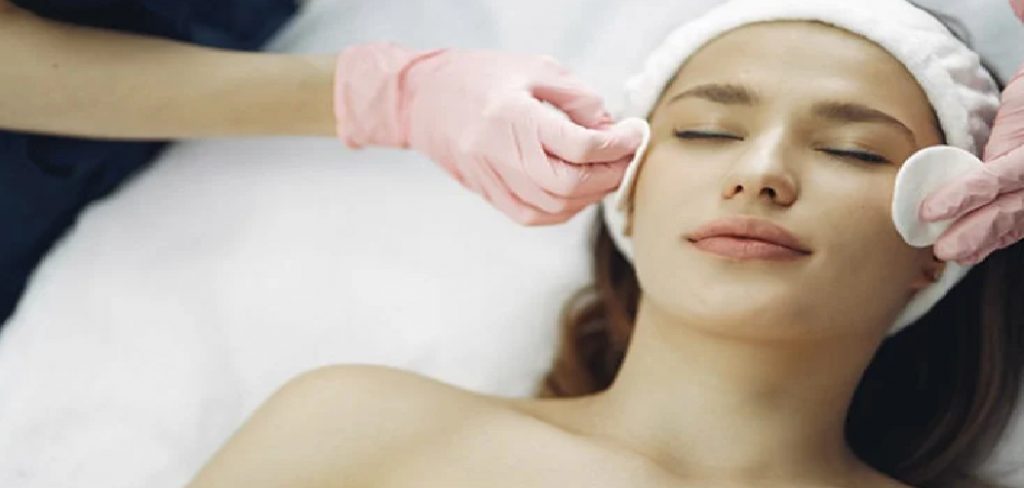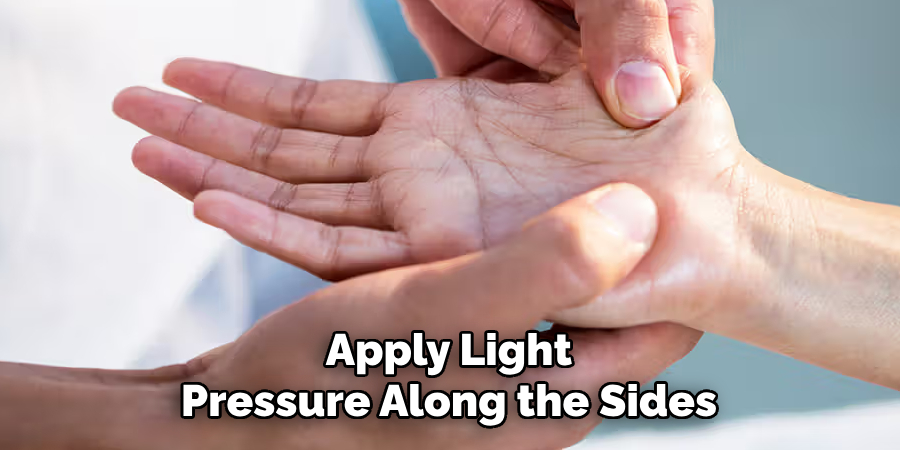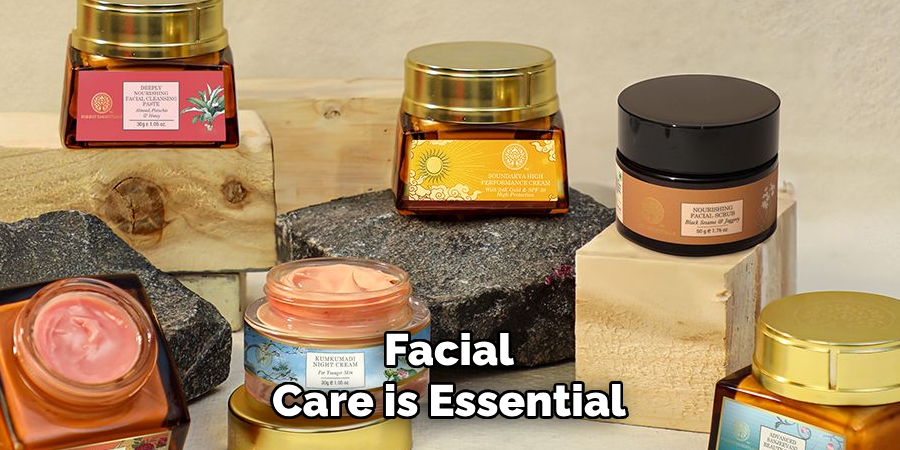Are you tired of looking in the mirror and seeing dull, tired skin? Are you ready to give your face a rejuvenating boost? Look no further than massage cream DIY!
Facial massage cream is an essential product for anyone looking to elevate their skincare routine and improve their skin’s overall health and appearance. By combining the benefits of hydration and massage, this cream helps to relax facial muscles, stimulate blood circulation, and enhance the absorption of skincare products. Whether you aim to reduce puffiness, achieve a glowing complexion, or simply indulge in a moment of self-care, knowing how to properly use facial massage cream can make all the difference.

This guide on how to use facial massage cream will walk you through the steps to make the most out of your facial massage cream.
What Are the Benefits of Using Facial Massage Cream?
Before diving into the steps, let’s first understand the benefits of incorporating it into your skincare routine.
- Relaxes Facial Muscles: Just like a full-body massage can relax your muscles, facial massage cream works similarly by soothing and loosening tense facial muscles. This helps to reduce tension and stress in the face, leading to a more relaxed appearance.
- Stimulates Blood Circulation: Massaging your face with facial massage cream promotes blood flow to the skin’s surface, bringing vital nutrients and oxygen to nourish and rejuvenate the skin cells. This can help improve dullness and give you a healthy glow.
- Enhances Absorption of Skincare Products: By gently massaging your face with cream, you’re increasing the skin’s temperature and opening up pores. This allows for better absorption of any skincare products applied afterward, making them even more effective.
- Alleviates Puffiness: Facial massage cream can come in handy if you struggle with puffiness in the face due to allergies or sleep deprivation. The gentle massaging action helps to reduce fluid buildup in the face, leading to a more toned and slimmer appearance.
What Will You Need?
To get started with facial massage cream, you’ll only need a few items that are likely already in your skincare collection:
- Facial Massage Cream: Many options are available on the market, so choose one that suits your skin type and concerns. Look for ingredients like hyaluronic acid, vitamin C, and antioxidants for added benefits.
- Cleanser: Before using facial massage cream, it’s essential to start with a clean face. Use your favorite cleanser to remove any makeup, dirt, or oil from the skin.
- Towel: A soft towel can come in handy when removing the facial massage cream from your face. Look for one made from a gentle, absorbent material.
- Your Hands: The best tool for facial massage cream is simply your hands! Make sure they are clean and dry before starting the process.
Once you have all of these items ready, it’s time to learn how to use facial massage cream for maximum benefits.

8 Easy Steps on How to Use Facial Massage Cream
Step 1. Cleanse Your Face
Start by thoroughly cleansing your face to remove dirt, makeup, and impurities that may have accumulated throughout the day. Choose a cleanser that suits your skin type—whether it’s gel-based for oily skin, creamy for dry skin, or a gentle option for sensitive skin.
Apply the cleanser evenly across your face using your fingertips in circular motions, working it into areas like your forehead, nose, cheeks, and chin. Be sure to cleanse down to the neck, as this step ensures a clean base for the facial massage cream to work effectively.
Rinse your face and neck with lukewarm water and gently pat dry with a soft towel, avoiding any excessive rubbing to prevent irritation. Proper cleansing preps your skin and allows the facial massage cream to absorb and perform at its best.
Step 2. Exfoliate Gently
Before applying the facial massage cream, consider exfoliating your skin to remove dead skin cells and promote better product absorption. Use a gentle exfoliant suitable for your skin type to avoid irritation. Apply the exfoliant in small, circular motions, focusing on areas prone to dryness or congestion, such as the nose and chin.
Avoid over-exfoliating, as this can lead to redness or sensitivity. Rinse thoroughly with lukewarm water and dry your face with a clean towel. Exfoliating helps create a smooth surface, enhancing the overall effectiveness of your facial massage routine.
Step 3. Apply the Facial Massage Cream
Once your skin is cleansed and exfoliated, take a small amount of facial massage cream and warm it between your fingertips. This helps activate the product and ensures even application. Gently apply the cream to your face and neck, starting from the center of your face and working outwards.
Use upward and outward strokes to avoid tugging on the skin, which can lead to premature sagging. Pay extra attention to areas where tension or dryness tends to build, such as the jawline, temples, and cheeks. The cream will provide the necessary glide for the massage, allowing your hands to move smoothly across the skin.
Step 4. Begin the Facial Massage
Start your facial massage by using gentle, circular motions with your fingertips. Focus on areas that tend to hold tension, such as your forehead, temples, and jawline. Use your thumbs to apply light pressure along the sides of your nose and under your cheekbones, helping to stimulate circulation and relieve stress.
Use your ring fingers to make small tapping motions for the delicate area around your eyes, promoting lymphatic drainage without applying too much pressure. Work methodically across your face, spending at least a few minutes on each area to maximize relaxation and improve skin elasticity. Always maintain upward and outward movements to encourage a lifted appearance.

Step 5. Finish with a Relaxing Neck and Shoulder Massage
After completing the facial massage, extend the relaxation to your neck and shoulders. Use your palms to apply gentle, downward strokes along the sides of your neck, releasing tension and improving circulation in the area. Move to your shoulders and use your fingertips to massage in firm, circular motions, focusing on any knots or areas of tightness.
This step not only helps to relieve stress but also promotes overall well-being. Conclude the massage by taking a few deep breaths to enjoy the calming effects of your routine fully.
Step 6. Hydrate and Protect Your Skin
After completing your massage routine, it’s essential to hydrate and protect your skin. Apply a nourishing moisturizer or facial oil to lock in the benefits of the massage and maintain your skin’s natural barrier.
Press the product into your skin rather than rubbing it to boost absorption. Follow up with sunscreen if you complete your morning routine, as this will shield your skin from harmful UV rays and prevent premature aging. Consistently hydrating and protecting your skin ensures lasting results and a healthy, radiant complexion.
Step 7. Maintain a Consistent Routine
To achieve long-lasting benefits, consistency is key. Incorporate your massage and skincare routine into your daily or weekly schedule based on your needs. Regular massages help to improve circulation, reduce tension, and enhance the overall health of your skin. Pair this with a balanced skincare regimen that includes cleansing, exfoliating, and moisturizing to maintain a glowing complexion. Remember, healthy skin is the result of ongoing care and attention.

Step 8. Keep the Rest of Your Body in Mind
While facial care is essential, it’s equally important to extend the same level of attention to the rest of your body. The skin on your body also requires regular cleansing, exfoliating, and moisturizing to remain healthy and vibrant. A gentle body wash removes dirt and impurities without stripping away natural oils. Exfoliate weekly with a body scrub or dry brush to slough off dead skin cells and promote circulation.
Afterward, apply a rich, hydrating body lotion or cream to lock in moisture and maintain skin elasticity. Don’t forget areas that are often overlooked, such as elbows, knees, hands, and feet, as these can become dry and rough over time.
By following a consistent body care routine, you can achieve soft, supple skin all over, enhancing your overall appearance and promoting a sense of well-being.
5 Things You Should Avoid
- Applying Too Much Product: Using excessive facial massage cream can clog your pores and leave your skin feeling greasy. Always start with a small amount and add more only if needed.
- Skipping a Clean Face: Never apply facial massage cream on dirty skin. Dirt, oil, and impurities can trap under the cream, potentially causing breakouts. Always cleanse your face thoroughly before use.
- Using the Wrong Cream for Your Skin Type: Each skin type requires specific care. Avoid using a product unsuitable for your skin type, as it could lead to irritation, dryness, or excessive oil production.
- Rubbing Too Harshly: Facial skin is delicate, and harsh rubbing can cause irritation or even damage. Always use gentle, upward strokes while massaging to protect your skin.
- Skipping Patch Testing: Applying a new product without testing it first can lead to allergic reactions. Always perform a patch test on a small area of your skin to ensure compatibility.

Conclusion
How to use facial massage cream can be a beneficial addition to your skincare routine when done correctly.
Start by selecting a cream suitable for your skin type and ensure your face is clean before applying. Apply a small amount of the cream and use gentle, upward strokes to massage it into your skin, promoting relaxation and better absorption. Remember to patch-test any new product to avoid allergic reactions or irritation.
By following these steps and being mindful of common mistakes, you can maximize the benefits of facial massage cream for healthy, glowing skin.
About the Author
Jane Hubbard is a passionate beauty expert with a wealth of experience in makeup, hair, and overall beauty techniques. After years of working as a hairdresser specialist, she followed her entrepreneurial spirit and started her own consultancy business.
Jane has always been driven by her desire to help others feel confident in their own skin, and she does this by sharing her knowledge, experiences, and practical beauty tips. Through her consultancy, she empowers individuals to embrace their unique beauty, offering tailored guidance that boosts both self-esteem and personal style.
Professional Focus
- Specializes in makeup, hairstyling, and beauty consulting.
- Provides personalized beauty advice, tips, and techniques to help individuals feel confident in their appearance.
- Dedicated to staying up-to-date with the latest industry trends and developments.
- Passionate about creating a comfortable and empowering experience for every client.
Education History
- University of Craft and Design – Bachelor of Fine Arts (BFA) in Woodworking and Furniture Design
- Woodworking Apprenticeships – Extensive hands-on training with skilled craftsmen to refine carpentry and furniture making techniques
- Online Courses & Masterclasses – Continued education in advanced woodworking techniques, design principles, and specialized tools
Expertise:
- Makeup artistry, hairstyling, and beauty consulting.
- Personalized beauty techniques to enhance confidence and self-expression.
- Educating clients on how to maintain their beauty routines at home.
